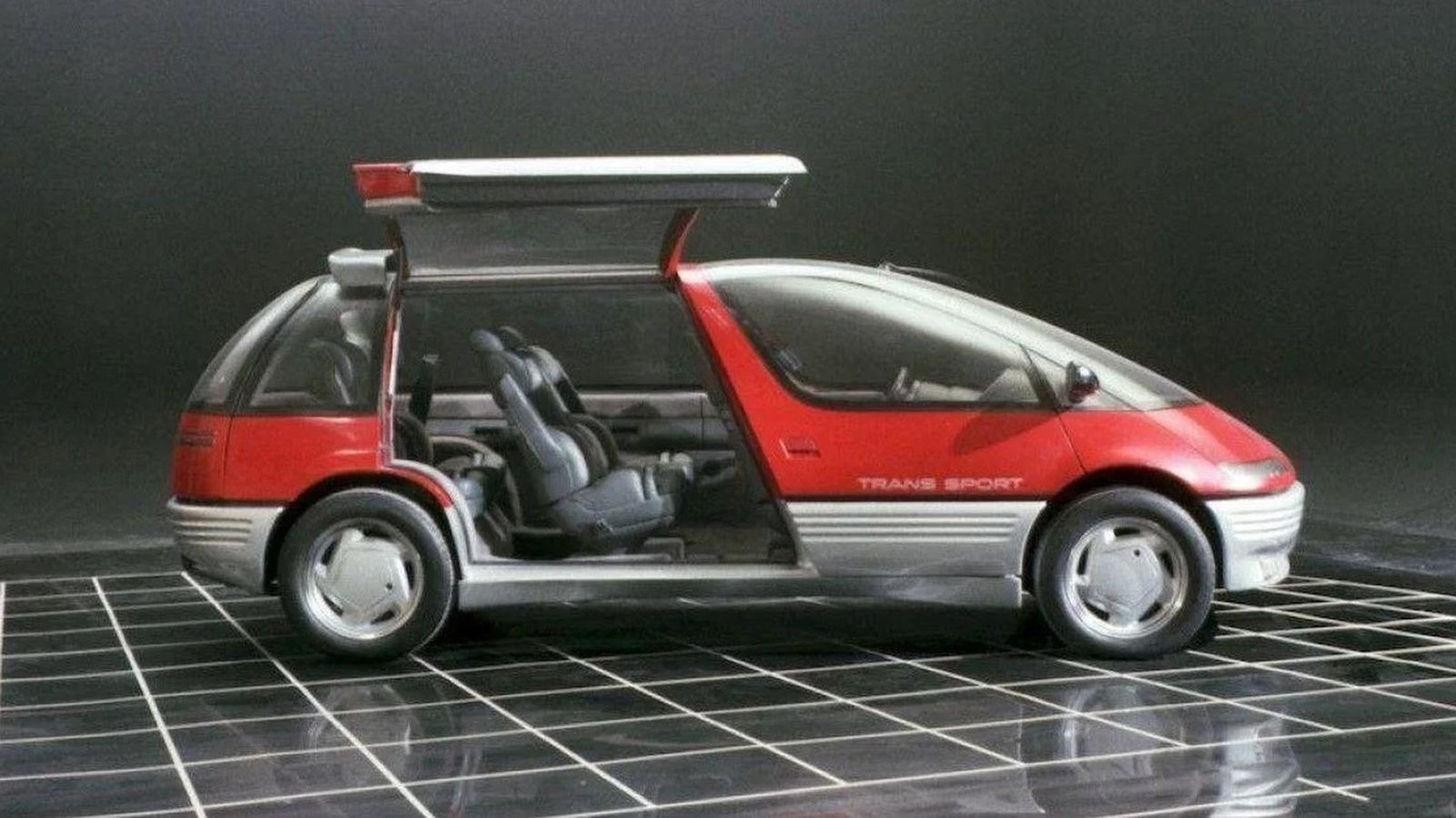
The final production model we know today did look different from most of the other Chevy Astro Van-styled vehicles on the road at the time. The steeply sloped, raked nose — reminiscent of Disneyland’s monorail, a high-speed bullet train — really did set it apart. However, the back half was all 90-degree angles and still made it look like a shoebox. The fusion between the front and back was just… off.
Yet, it was nowhere near as radical looking as its concept counterpart. In fact, while the concept more closely resembled an actual futuristic car, the production model was merely a peek through some curtains into the future. The concept van maintained a similar steeply raked nose, but there wasn’t a single 90-degree angle to be found anywhere. All the corners and edges were rounded and smooth, evoking an almost capsule-like appearance.
Most of the van’s upper half was made of glass windows, which wrapped up into the roof (via Jalopnik) from all directions and gave rear occupants an open-air feel. The front window and cabin area looked straight off a helicopter. Between the dual-paned glass was liquid crystal that could be darkened or lightened with the flip of a switch. And instead of a boring old conventional sliding door on the passenger side (like the production model had), the concept came with a single, sizeable gull-wing opening door you would find on expensive high-end sports cars.
Speaking of sports cars, a spoiler on the roof provided downforce and gave it an extra bit of panache. The slotted rear taillights also had a unique feature wherein they would turn red when stopping, show yellow when the car slowed down, and turn clear when backing up.
For all the latest Games News Click Here
For the latest news and updates, follow us on Google News.
